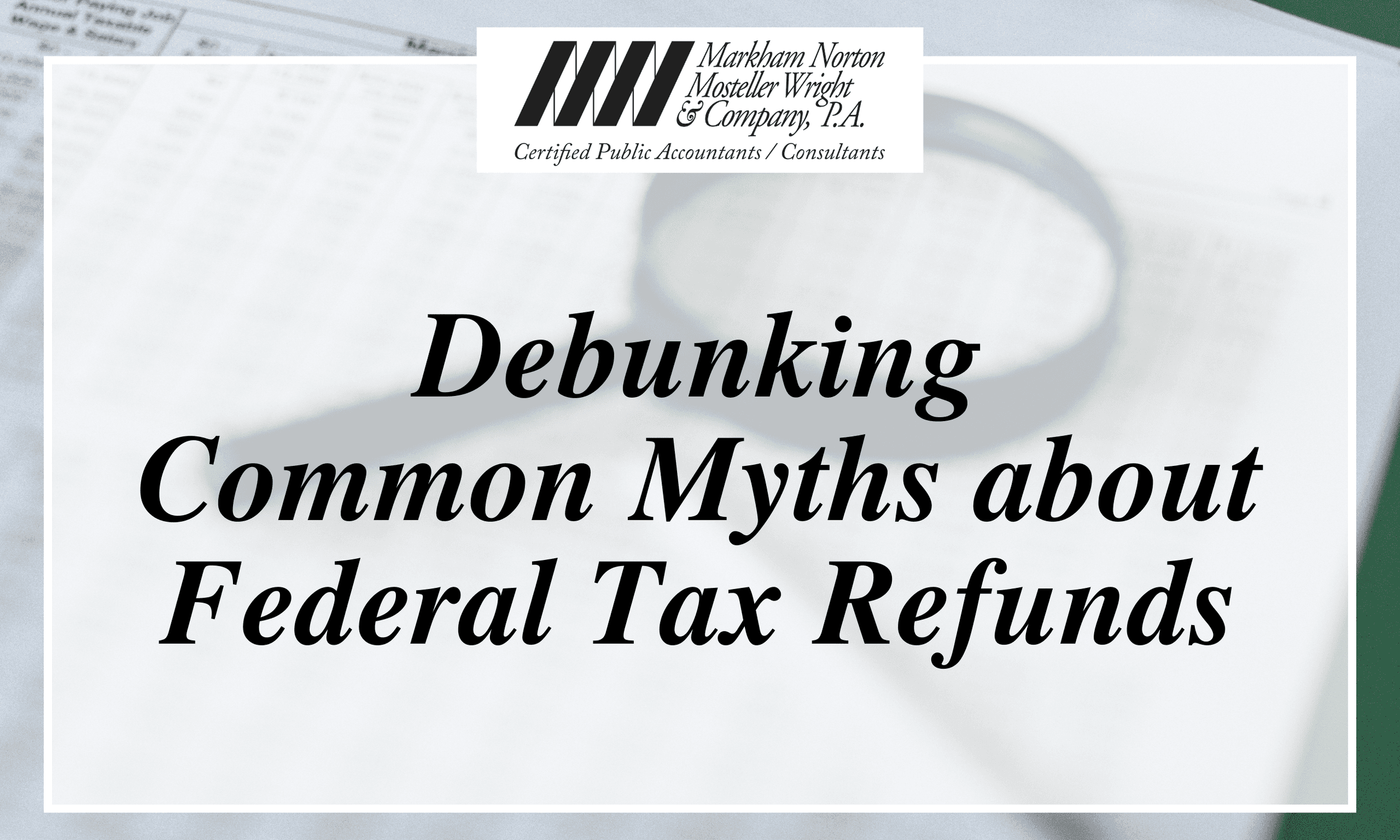Debunking Common Myths about Federal Tax Refunds
Once people complete and file their tax return, many of them eagerly await any refund they may be owed. Knowing fact from fiction can help manage expectations as they wait for their money.
Myth: Calling the IRS, a tax software provider or a tax professional will provide a more accurate refund date.
Fact: The best way to check the status of a refund is through the Where’s My Refund? tool or the IRS2Go app.
Taxpayers can also call the automated refund hotline at 800-829-1954 to get their refund status. This hotline has the same information about current tax year refunds as Where’s My Refund? There is no need to call the IRS unless Where’s My Refund? says to do so.
Myth: The Where’s My Refund? tool must be wrong if it hasn’t updated yet.
Fact: Where’s My Refund has the most current information about refund status. It is updated once a day, usually overnight. Even though the IRS issues most refunds within 21 days, it’s possible a refund may take longer. If the IRS needs more information to process a tax return, the agency will contact the taxpayer by mail. Taxpayers should also consider the time it takes for banks to post the refund to the taxpayer’s account. People waiting for a refund in the mail should allow extra time.
Myth: The Where’s My Refund? tool must be wrong because the refund amount is less than expected.
Fact: There are several factors that could cause a tax refund to be less than expected. The IRS will mail the taxpayer a letter of explanation if it adjusts a refund. Some taxpayers may also receive a letter from the Department of Treasury’s Bureau of the Fiscal Service if their refund was reduced to offset certain financial obligations. Before calling, taxpayers should wait for the letter to understand why the change occurred.
Myth: Getting a refund this year means there’s no need to adjust withholding for tax year 2024.
Fact: To avoid a surprise next year, taxpayers should make changes now to their tax withholding. The Tax Withholding Estimator tool can help taxpayers determine if their employer is withholding the right amount. Taxpayers can use the results from the Tax Withholding Estimator to complete a new Form W-4, Employee’s Withholding Certificate and submit it to their employer as soon as possible. Withholding takes place throughout the year, so it’s better to take this step as soon as possible.
IRS Tax Tip: 2024-35
___________________________________________
Our firm provides the information on our blog/vlog for general guidance only, and does not constitute the provision of legal advice, tax advice, accounting services, investment advice, or professional consulting of any kind. The information provided herein should not be used as a substitute for consultation with professional tax, accounting, legal, or other competent advisors. Before making any decision or taking any action, you should consult a professional advisor who has been provided with all pertinent facts relevant to your particular situation. Tax articles on this website are not intended to be used, and cannot be used by any taxpayer, for the purpose of avoiding accuracy-related penalties that may be imposed on the taxpayer. The information is provided “as is,” with no assurance or guarantee of completeness, accuracy, or timeliness of the information, and without warranty of any kind, express or implied, including but not limited to warranties of performance, merchantability, and fitness for a particular purpose.


